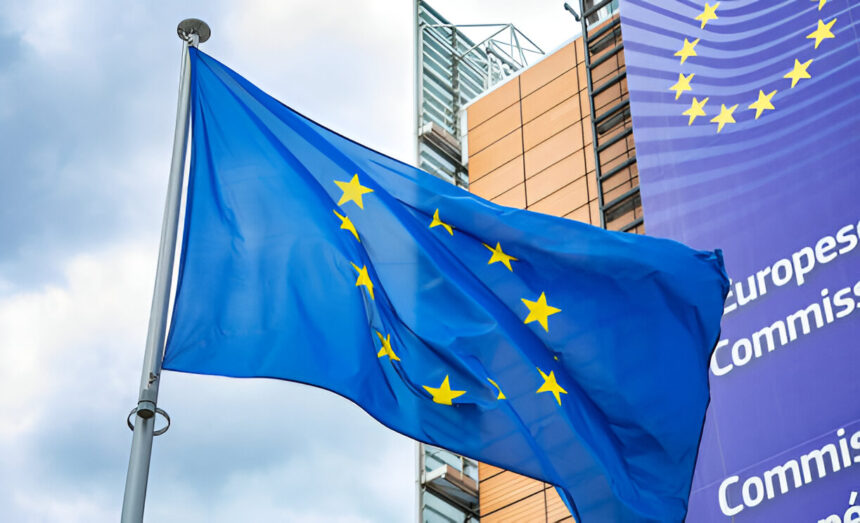The European Central Bank (ECB) is rethinking its monetary policy strategy, moving away from aggressive tools like quantitative easing and negative interest rates. Vice-President Luis de Guindos emphasized that the ECB has learned from the unintended side effects of “easy money,” such as inflated asset bubbles. With inflation peaking at 10.6% in 2022 and ongoing geopolitical tensions—especially around Iran’s oil exports—the ECB is adopting a more cautious, balanced approach to tackle rising prices while maintaining economic stability.
ECB Signals Major Shift in Monetary Policy
De Guindos: “ECB Has Learned Its Lesson” on Easy Money
In a recent statement that has sparked widespread discussion, European Central Bank (ECB) Vice-President Luis de Guindos revealed a significant shift in the bank’s approach to monetary policy. In a post published on X by Reuters Business (@ReutersBiz, 12:45 UTC, June 16, 2025), de Guindos underscored that the ECB has “learned its lesson about the ills of easy money,” specifically the aggressive money printing through quantitative easing (QE). This policy has been criticized for potentially inflating property and financial market bubbles by injecting 5 trillion euros ($5.8 trillion) into the economy, a concern echoed in a 2023 ECB staff analysis, as detailed in recent working papers.
From Negative Rates to Inflation Control
For over a decade, the ECB operated in an environment of low inflation and negative interest rates, a strategy designed to stimulate economic growth. However, with inflation soaring to a peak of 10.6% in October 2022 (per Eurostat data), the central bank has been forced to reassess its tools. De Guindos indicated that while past instruments like QE and negative rates have proven beneficial, the ECB is now more attuned to their side effects and plans to adopt a more cautious approach moving forward. This strategic pivot comes as the global economic landscape shifts, marked by faster price growth and disrupted trade patterns.
Geopolitical Risks Add to ECB’s Dilemma
Geopolitical tensions are significantly complicating the situation. Recent reports highlight traders’ nervousness over potential disruptions to Iran’s oil exports—approximately 3.3 million barrels per day (according to OPEC and The New York Times, June 2025)—due to conflicts involving Israel. Such energy price shocks have historically driven inflation in Europe, posing a fresh challenge to the ECB’s newly cautious stance and potentially forcing the bank to balance inflation control with economic stability.
Impact on the Euro and Major European Currencies
This significant shift in ECB policy and the broader economic context could have profound implications for the euro and other major European currencies. Here’s how:
Strengthening of the Euro in the Short Term
As the ECB signals a move away from “easy money” policies, interest rates are likely to stabilize or see modest future increases, making the euro more attractive to investors seeking higher yields. The recent decision to lower key ECB interest rates by 25 basis points to 2.00% for the deposit facility (effective June 11, 2025, per www.ecb.europa.eu) reflects a measured approach. However, any subsequent hints of tighter policy in response to persistent inflation could bolster the euro against currencies like the U.S. dollar or British pound, especially if the Federal Reserve or Bank of England maintain relatively looser policies. This is a key factor for forex traders to watch closely.
Volatility Due to Geopolitical Risks
The potential disruption of Iranian oil exports could drive up energy prices, fueling inflation further across Europe. This might prompt the ECB to reconsider its recent rate cut or even hike rates sooner than anticipated, leading to significant short-term volatility in the euro. Currencies of energy-dependent nations like Norway (Norwegian krone) or those with strong trade ties to the eurozone, such as the Swiss franc, could also feel the ripple effects. Potential depreciation could occur if rising energy costs erode export competitiveness in these economies.
Long-Term Pressure on Peripheral Currencies
Countries with higher debt levels, such as Italy, have historically relied on extensive ECB bond purchases to keep their borrowing costs manageable. The 2022 spike in Italian borrowing costs after the ECB significantly curtailed bond purchases (as noted by Investing.com) underscores this vulnerability. A more cautious ECB approach to monetary policy might lead to higher yields on sovereign debt in peripheral eurozone nations, weakening their fiscal positions and potentially putting downward pressure on their currencies within the euro framework. While this could indirectly strengthen the euro as a whole by enforcing fiscal discipline, it might strain the cohesion of the currency union itself.
Competitive Dynamics with Other Major Currencies
The euro’s trajectory will also heavily depend on how other global central banks respond to their domestic economic challenges. If the U.S. Federal Reserve continues its current path or the Bank of England faces its substantial inflation challenges, the euro could gain significant ground against the dollar or pound. However, a coordinated global tightening cycle among major central banks could cap the euro’s upside. Forex traders will likely watch all ECB communications closely for clues on future rate decisions and comparative policy stances.
Conclusion: A Turning Point for European Monetary Strategy
The European Central Bank’s move toward caution marks more than just a policy adjustment; it signals the closing of a chapter defined by ultra-loose monetary strategies and the beginning of a more measured, risk-aware approach. Driven by the hard-earned lessons of the past, particularly the unintended consequences of prolonged quantitative easing, the ECB now faces a delicate balancing act: reining in inflation without stifling growth amid a world of rising geopolitical and energy-related uncertainties.
For investors, traders, and policymakers alike, the present scenario isn’t just academic theory; it’s the ground beneath our feet shifting. Currency markets, bond yields, and broader investment strategies will all feel the tremors of this pivot. As energy markets reel from the possibility of disruption and inflation pressures persist, the ECB’s path forward will demand strategic clarity and resilience.
In this evolving landscape, understanding the intersection of central bank policy, global conflict, and economic interdependence will be critical. The eurozone stands at a crossroads, and so do those of us watching, analyzing, and positioning ourselves within these unfolding dynamics. Stay sharp, stay informed; the next moves will matter more than ever.
How do you see this ECB monetary policy shift playing out in the second half of 2025? Will it complicate the ECB’s balancing act further? Share your thoughts below!









